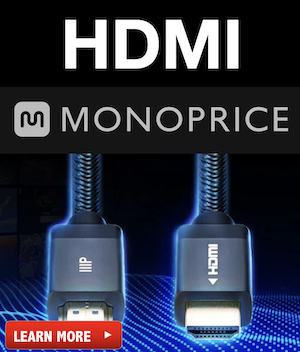An old thread that is worthwhile updating with an additional data point...
My own experiences involved comparing some of the higher powered Onkyo AVR's (876, Integra DTR 70.4), Quad 606 Current dumping/Feedforward, and Crown XLS2500 amps.
My Speakers:
Old history - I used to have Quad ESL63 & Quad ESL989 - towards the end of my "quad era" - these were setup as an all ESL surround setup.
The Panels tended to overwhelm the room, which led to WAF issues - I was unwilling to compromise on the transparence and low distortion aspects of the ESL sound... I had not heard speakers to match (within my budget).... a serendipitous walk past a set of Gallo ref 3.2's in a department store (!!) - led to these replacing my Quads.
Current speakers are therefore:
Gallo Ref 3.2 Left and Right, Gallo Ref AV Center, with PSB Alpha Intro Surround
Key points about these speakers...
They are nominally 8 ohm and can sound good with relatively low power amps... (88db spl/wm)
But the woofer drops to circa 3 ohm, and the tweeter presents a capacitive load dropping down to 1.6ohm
What this means, is that the amps driving the fronts must be stable into sub 2 ohm loads - any amps that start to misbehave into that 1.6ohm tweeter, end up sounding like rubbish!
Their designer, Anthony Gallo, used to demo them at audio shows with a 500w@8ohm Spectron Musician III amp. (company defunct since the designer/owner passed, and well outside my budget)
A brief look at the amps:
The Onkyo and Integra are identical chassis / amps - with earlier/later DSP/surround features - from a bare sound perspective the two are identical
Per Spec: 140W@8ohm - Measured/tested at 165+W/ch @ 8ohm - they are specified for 4 ohm and up... not specced for 2 ohm!
Quad 606-2 - Now getting long in the tooth, these were/are audiophile Amps, using the original Quad Current Dumping design, rated for 140W@8ohm... and specified as "unconditionally stable into ANY load"
Very nice amps, obviously did a fantastic job with the Quad speakers - but known to be somewhat current constrained into low impedance loads (ie: 2 ohm and down) - however they don't tend to "misbehave"
Crown XLS2500 - the most power of the first generation of Crown Drivecore amps, I purchased these used as an experiment... At circa $500 for two of these, I thought it worth while trying.
Rated 440W@8ohm & 1200W@2ohm - they have an onboard DSP which allows for adjustable crossovers, and the left and right channel can be set up to Biamp - can also be set up as Bridged
Their power rating was within a similar order of magnitude to the Spectron Musician that AG used to use to demo the Gallo speakers.
Starting point was a comparisons between the AVR and the Quad 606 on the Quad ESL's... the AVR's are very good indeed, and differences between the 606 and the AVR were minor, and perhaps purely psychological - did some back and forth over a period of months, and ended up just using the AVR amps... avoiding the added cabling and complexity, as it did not provide any "real" benefit.
After the switch to Gallo speakers - comparisons were done again... this time there was a slight but noticeable difference between the AVR amps and the 606's - I put this down to the 606's handling the low impedance better than the AVR's - the difference was however slight... the AVR's had good amps! - but the difference was audible and consistent - tried it a number of times over at least 18months.
Also experimented with BiAmping the speakers - with both the AVR's and a pair of 606's - did not find it to make much difference.
After reading a number of forums discussing the Crown XLS amps, purchased those, and started a lengthy comparison process over about 6 months... the Crowns were tried alone, and in BiAmp mode...
The Crowns sounded better than the Quad 606 - it was by no means a huge step up, just another noticeable and consistent improvement - again all I can put this down to is low impedance load handling / current. (and the Quad sound marginally better than the AVR)
I don't run things loud - usual listening volumes are circa 70db - which means peak power use (assuming +20db max for peaks) is circa 120W - and continuous power use is typically under 1W
I expected the Quad amps to end up as the superior amps, but that was not the case ultimately.
I think that difficult speakers, require the amp to cater to the peaks cleanly - and this takes priority over anything else - if those peaks clip (which includes running out of current at 1.6 ohm impedance load in my case) - then it tends to result in distortion artifacts right through the frequency range...
Circa 120W @ 8ohm - is circa 480W @ 2 ohm - and for my speakers in my setup, I think this is the critical factor.
If you have speakers that require a reasonable amount of power output at 2 ohm - don't compromise! It does make a difference. Quite a lot of power amps (class D and otherwise!) , cannot put this sort of power out into 2 ohms.
I don't believe the Crown's would have sounded any different to the AVR's or the Quad's had they been powering the Quad ESL's I had previously... they might even have been inferior (which is what I was expecting).
Looking around at today's amplifiers, getting an amp capable of 500W+ at 2 ohms is difficult, most amps are not even rated or measured at that impedance, and of those that are, few can achieve this.
If you have "difficult" speakers - the Crown XLS range may be a solution, at a very decent price (and usually readily available used from the Pro marketplaces - at even better prices)








